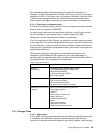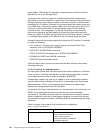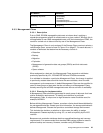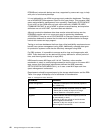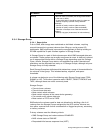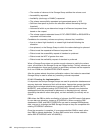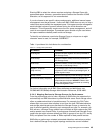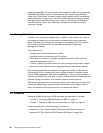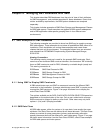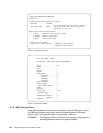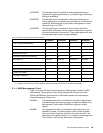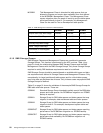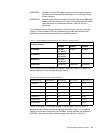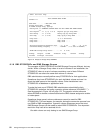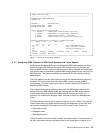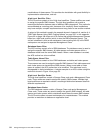
© Copyright IBM Corp. 1999 47
Chapter 6. Managing DB2 Databases with SMS
This chapter describes DB2 databases from the point of view of their attributes
for SMS management, and provides examples for these databases. Due to their
stricter availability requirements, the DB2 system databases are analyzed
separately.
This chapter includes examples of SMS Data, Storage, and Management Classes
for DB2 table spaces. These examples are applied to DB2 system tablespaces
and to DB2 application table spaces grouping them in four different user
environments.
6.1 SMS Examples for DB2 Databases
The following examples are provided to show how SMS can be used to manage
DB2 table spaces. These examples do not show all possibilities SMS offers to an
installation. Each installation can review these examples and create those
classes that best suit its environment. The examples shown here are extracted
and adapted from DFSMS/MVS Implementing System-Managed Storage,
SC26-3123.
Naming Convention:
The following naming structure is used for the example SMS constructs. Each
name has a two-character SMS construct identifier, two characters ’DB’ to identify
them as SMS constructs used for DB2, followed by a variable length (aaaa) text.
This naming convention is:
DCDBaaaa SMS Data Classes for DB2
SCDBaaaa SMS Storage Classes for DB2
MCDBaaaa SMS Management Classes for DB2
SGDBaaaa SMS Storage Groups for DB2
6.1.1 Using ISMF to Display SMS Constructs
A DB2 administrator can use ISMF to access and examine the different SMS
constructs in the installation. A storage administrator uses ISMF to create and to
manage the SMS constructs. Figure 14 on page 48 shows how to display the
active Data Class DCDB2.
The options available on the DATA CLASS APPLICATION SELECTION panel are
dependent on the authorization of the user. Only a user authorized to manage
SMS constructs is allowed to define or alter them. Other users may only have
options 1 (List) and 2 (Display) available.
6.1.2 SMS Data Class
All DB2 table spaces, either for system or for user data, have exactly the same
attributes. One Data Class can be defined for all these data sets. The Data Class
allows an override of space parameters (primary and secondary allocation
quantity) because those will be different for each table space. Figure 15 on page
48 shows some information from the Data Class DCDB2, a Data Class example
for DB2 table spaces and index spaces.



